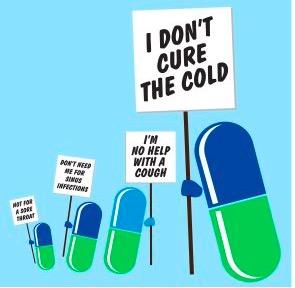Of all the problems we don't need, an increase in bacterial resistance to antibiotics is near the top of the list. This is the primary reason that prompted countries in Europe to take action five years ago that would limit the improper use of antibiotics in livestock and pets. The plan is working better than expected.
A recent report from the European Medical Agency noted that the sale of antibiotics for animal use in Europe between 2011 and 2015 decreased by 13%. But some countries did much better. For example, in France, antibiotic use in animals decreased by 37% (1), exceeding the initial goal of 25%. Since 2005 use has declined by 50%. These sales data represent antibiotics used for therapeutic reasons, not growth promotion, which is a different, (and very sticky) issue. The reduction represents the improper use of antibiotics, for example, treatment for viral infections, and also overuse.
In Britain, the sale of antibiotics for use in food-producing animals dropped by 27%. Also, the sales of antibiotics that are critical for use in humans fell even further. Sales of Colistin, which, despite being little-used in animals, is the last line of defense against multi-drug resistant bacteria, dropped by 83% (2).
How does the US stack up against Europe? Not so well, according to American Council advisor Dr. David Shlaes:
"Even though Europe is way ahead of the US - especially the Scandinavian countries - in limiting the use of human antibiotics in animals, they also have things left to do. First - they track using an artificial correction approximating the number of animals in a given country. Obviously what we want is an accurate number for use. They also follow this in terms of milligrams or grams - but what might be better is some estimate of human daily doses used per animal. Nevertheless - the report is much better than what we produce in the good old US of A."
David Shlaes, M.D. Former Vice President of Infectious Diseases at Wyeth, and American Council advisor
In Britain, the reduction in antibiotic use was categorized according to the food class, for example, poultry, fish, and meat. All have seen decreases in the past five years by changing specific practices. For example, respiratory diseases can be minimized in calves by keeping them from mixing with other animals. Like young children who are going to school for the first time, calves are more susceptible to infectious diseases. Also like children, calves should not be treated with antibiotics for a viral infection.
The European plan is encouraging since the results show that healthy animals can be raised just like healthy children. Use antibiotics only when necessary.
NOTES:
(1) The French reduction, which is the largest in Europe was recorded between 2012 and 2016.
(2) Although the percentage decrease of use of Colitstin is high, the reduction in the total amount of the drug is low, since Colistin is rarely used in animals. High-priority antibiotics, those critical for human health, represent only 1% of the total sales.




